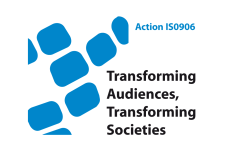- About the Action
- Events
- PhD workshop - Ljubljana 2014
- Action Open Conference - Ljubljana 2014
- New Media and Participation conference - Istanbul 2013
- Belgrade meeting 2013
- Media literacy research and policy - Brussels 2013
- ICA Pre-Conference 2013
- Tampere meeting 2013
- Budapest workshop 2012
- Milan meeting 2012
- Brussels PhD workshop 2012
- Brussels Action workshop 2012
- London meeting 2011
- Zagreb Conference 2011
- Lisbon meeting 2010
- Affiliated events
- WG 1
- WG 2
- WG 3
- WG 4
- Cross-WG
- Output
Innovation and the role of push and pull
Loos, E., Mante-Meijer (2011). Innovation and the role of push and pull. Pierson, J., Mante-Meijer, E.A., & Loos, E F. (Eds.). New Media Technologies and User Empowerment, 27-43Berlin: Peter Lang.
Abstract: Innovation and the Role of Push and Pull In 2000, the European Council and the Commission presented the “Action Plan eEurope – An information society for all”, which contained a number of defined actions, clustered around three main objectives. These were (1) a cheaper, faster, secure internet, (2) investing in people and skills and (3) stimulating the use of the internet. The Plan envisioned the evolution of the “Broadband Society”: a society in which broadband technology has become the universal medium used by all people in Europe. Widespread broadband deployment would yield benefits for all citizens and would give Europe an innovative competitive edge in today’s globalizing society. According to the Action Plan, the eEurope targets and broadband society were to have been realised by the year 2010. Now, having reached the year 2010, we see that both governments and technologists have developed a plethora of activities in this direction. Nevertheless, eEurope is still a far away goal. A mismatch remains between society and technology, with technology considerably outpacing societal use of its possibilities. What could be the reasons behind the lag between technological possibilities and their actualisation? To understand the reasons for this gap, it is necessary to look at how technological innovations find their way into the everyday lives of individuals and groups of citizens. Weick (1969, 2001) and Giddens (1984) respectively introduced the concepts of “enacted environment” and “duality of structure”. When confronted with demands in their environment, people make sense of structure, “a recursively organised set of rules and resources” (Giddens 1984, 25) by “enacting” their environment. This sense making results in practices, which in turn influence structure (“duality of structure”) and is part of a choice-making process: people can be forced (pushed by other instances) or enticed (pulled) into certain practices. In this process, we find enablers and constraints that facilitate or hinder certain choices. Several theories provide insight into the innovation process and the enablers and constraints that play a role in innovation. In this chapter, sense making in the process of technological innovation is discussed within the perspective of general diffusion theory, domestication theory, capability theory, theories of risk taking and choice making theory. First, we take a close look at how push and pull play a role in the creation of the Broadband Society and the resulting innovational practices by users and we discuss the concept of “innovation” and the role that is played by creativity and time in the innovation 2 process. Then we offer a number of illustrative cases that show the diverse factors playing a role in the innovation process a nd the theories mentioned above are elaborated in order to show how the innovation process is enabled or constrained. Finally, we analyse these cases in the light of the different theoretical perspectives provided by these theories. Our main questions are: ● What is innovation in the Broadband Society? ● Which aspects of innovation can be distinguished? ● What is the role of push factors and pull factors in this innovation process? ● Which enablers and constraints can be distinguished during this process?

